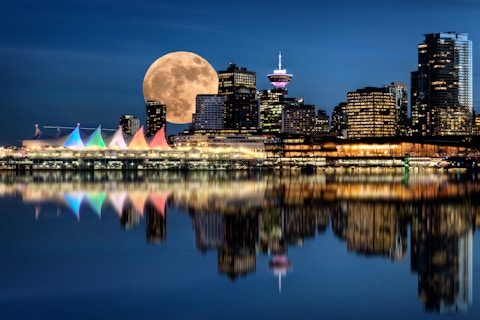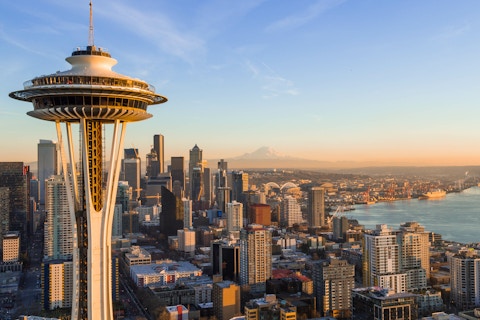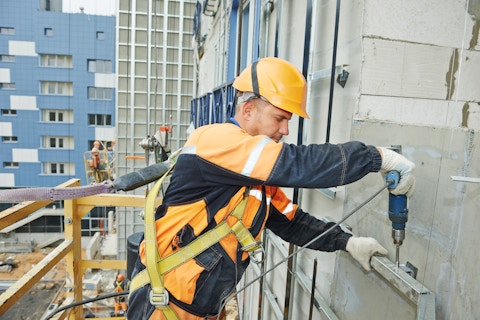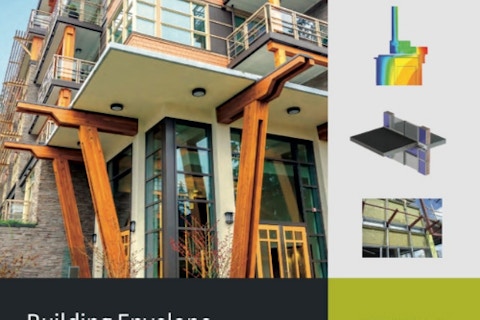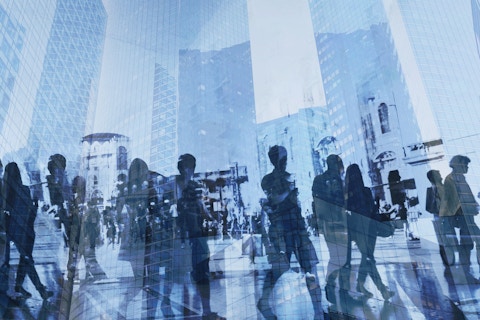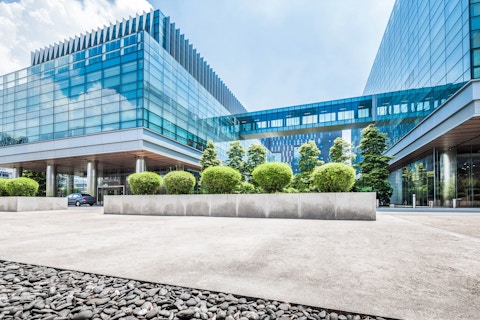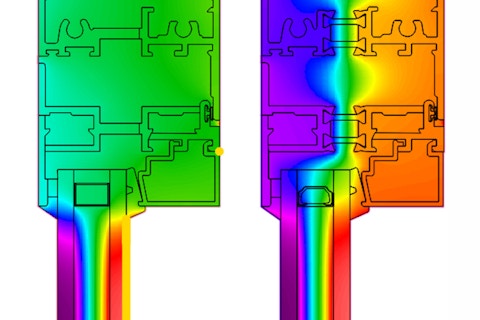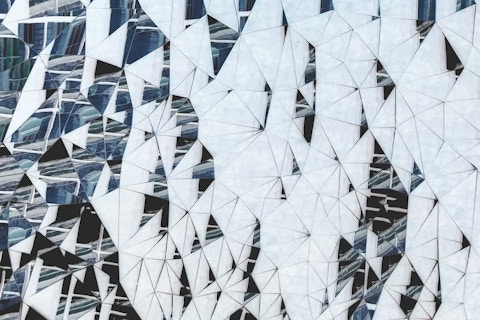
RECAP – Facade Tectonics Forum: NYC! Expands and Amplifies the Better Buildings Dialogue
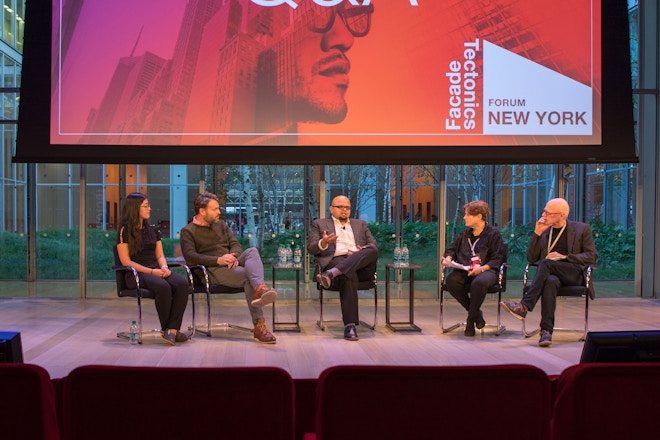
Thought leaders from the building community across North America gathered at the TimesCenter in New York City on October 27 for the latest event conducted by the Facade Tectonics Institute (FTI). The half-day Facade Tectonics Forum: NYC, was themed Outside the Lines: Building Facades Redefine Urban Living in NYC and featured eight speakers in three sessions; the Inside, the Outside, and the Far Side, the sessions reflecting the permeating influence of the building skin in buildings and urban habitat.
The speaker program for the Forum was remarkable, reflecting the dynamism and highlighting new trends in rapidly evolving facade design and delivery practices. The Institute’s Forum events draw largely on speakers and attendees from the local community, but some traveled from across the continent to participate.
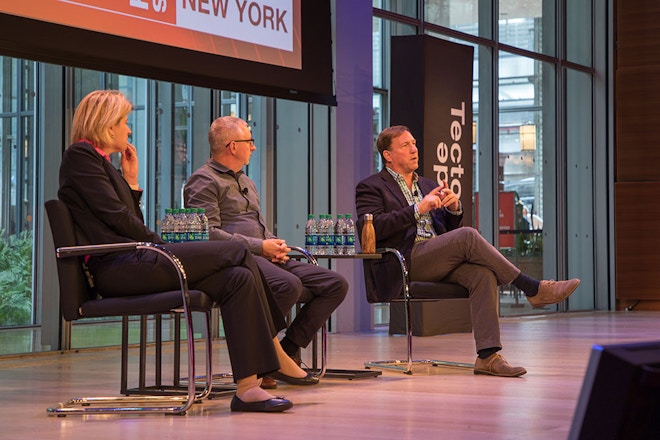
Session one, The Inside: The facade effect on health, productivity and lifestyle, featured Bill Browning, founding partner of Terrapin Bright Green, a local high-performance green building consultant, Kevin Hydes, founder and CEO of Integral Group, an international deep energy consulting engineering firm, and Mariana Figueiro, a researcher at Rensselaer Polytechnic. The session embodied the people-centric design thinking that is reshaping facade design and delivery practices. Browning discussed recent work of Terrapin integrating biophilic considerations in the facade, with the extensive use of plant materials literally greening the building skin and providing views to the outside through a screen of vegetation. Hydes provided recent examples of how Integral is enhancing building performance with novel yet affordable solutions, emphasizing the importance of starting from a solid foundation of passive building and facade design strategies. Figueiro presented findings related to lighting research, but not in the familiar sense of daylighting as it effects visual perception, but rather the effect of lighting conditions on the body clock, the impact on circadian rhythms and human health. This is an emerging consideration that will impact future facade design, daylighting and electric lighting practices.
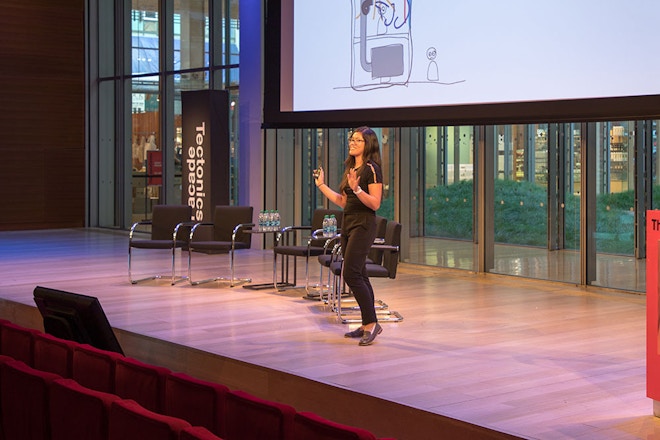
Session two, The Outside: The facade effect on urban habitat, shifted the focus from interior performance considerations to the influence of the building skin on a building’s surroundings. The session featured Matthew Lister with the innovative firm of Gehl Architects, and Linda Lam and Shrikar Bhave of leading climate engineering consultant Transsolar KlimaEngineering. Erik Olsen, managing partner of Transsolar’s NYC Office helped organize the session and noted, “This session provides a rare opportunity to explicitly address the important link between the building facade and urban habitat.” Lister gave an engaging presentation of the novel approach to architecture and urban design developed by the Danish firm led by Jan Gehl, using their work on the nearby Times Square as one of several examples. Lam and Bhave followed with equally compelling discussions of their approach in supporting the pioneering work of Gehl and other firms pursuing innovative solutions in buildings and urban habitat. Climate engineering firms like Transsolar are relatively new constituents in the building industry and bring an important dimension to building projects, along with new insights, practices and tools for improving critical aspects of performance.
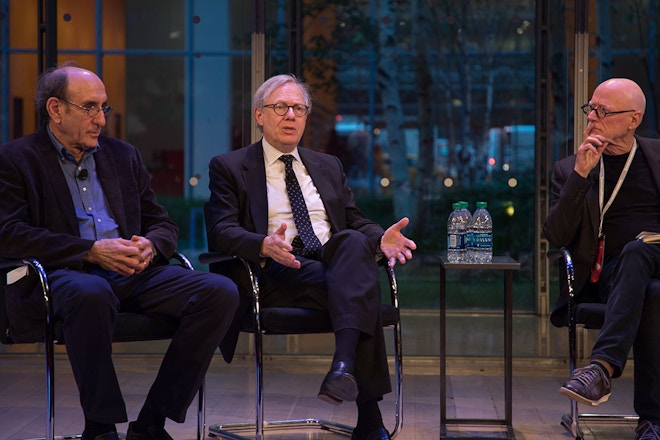
Session three: The Far Side: Scaling success–the NYT building revisited, focused even closer to home, in fact on the very building in which the Forum was conducted, the New York Times building. Steve Selkowitz, renowned building scientist with the Lawrence Berkeley National Laboratory, and David Thurm, with building owner’s consulting firm Lehrer, partnered for this session as they did for the design and delivery of the ground-breaking facade system developed for this Renzo Piano designed building. Thurm at the time was working for the New York Times managing the construction of the new headquarters building. Working with Selkowitz and LBNL, along with select lighting, control and shading systems industry partners, the team developed an automated, fully integrated daylighting/shading control system including sensors, controllers, operable blinds and customized software to drive automation in response to changing lighting conditions. A full-scale mockup was constructed and tested for a full year before the system design was finalized and implemented. The built project was subject to extensive post-occupancy evaluation, and is one of the few data-verified success stories in tall building facade performance, providing approximately 26% reduction in building energy consumption, 56% reduction in lighting, as well as peak energy benefits, as compared with an equivalent code compliant building. Thurm passionately emphasized the critical importance of the integral involvement of the building owner in the entire building design and delivery process. Selkowitz questioned why, in this age of self-driving automobiles, there is no automated facade system on the market integrating daylighting, glare, and interior environmental control systems, provided as a single-source warrantied product. The concept is proven in the New York Times building and all the technology is available, but not as an integrated product offering, an opportunity, he suggested to the audience.
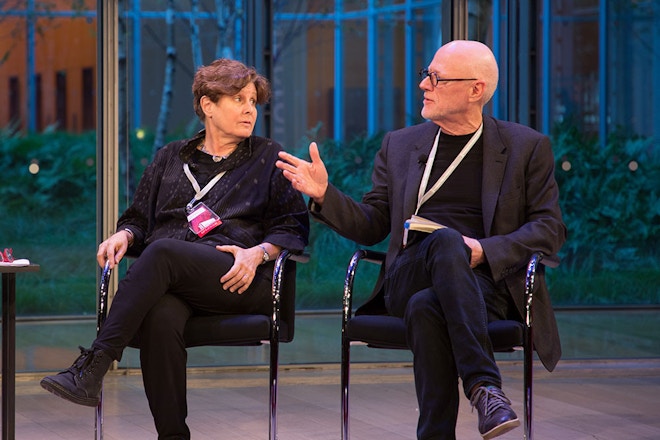
Mic Patterson, the Director of Strategic Development for Schüco-USA chaired the Forum, along with co-chair Laurie Kerr with the Urban Green Council, the NYC Chapter of the US Green Building Council. The speakers were limited to a maximum of 10-minute presentations, leaving extended time for a moderated panel discussion among the speakers and ultimately opened to the audience. The dialogues were spirited and the interchange lively. The sessions were separated by half-hour networking breaks and followed by a reception with finger-food and drinks, giving the participants ample opportunity to interact and visit with event sponsors. The sponsor area was dominated by a VR demonstration conducted by the Virtual Construction Lab of Schüco (VCL) that introduced many of the Forum attendees to the novel work being produced by the VCL in a VR environment.
The event was hosted by the Ornamental Metals Institute of New York and supported by a select group of sponsors. You can read more about the Facade Tectonics Institute here.
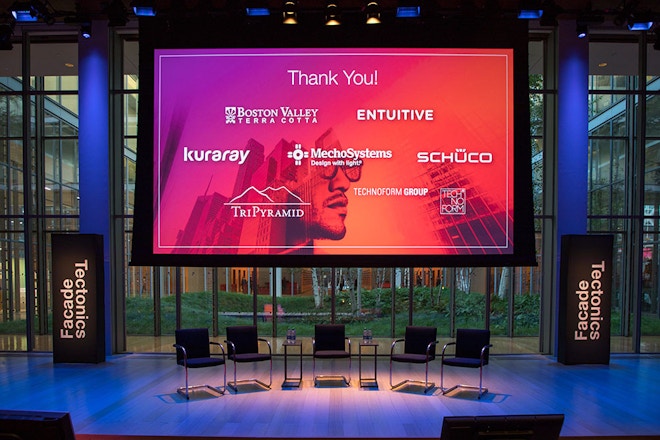
Looking for something specific?
Search our extensive library.
FTI’s SKINS email is the central source for the latest in building skin trends and research.
All emails include an unsubscribe link. You may opt out at any time. See our privacy policy.
